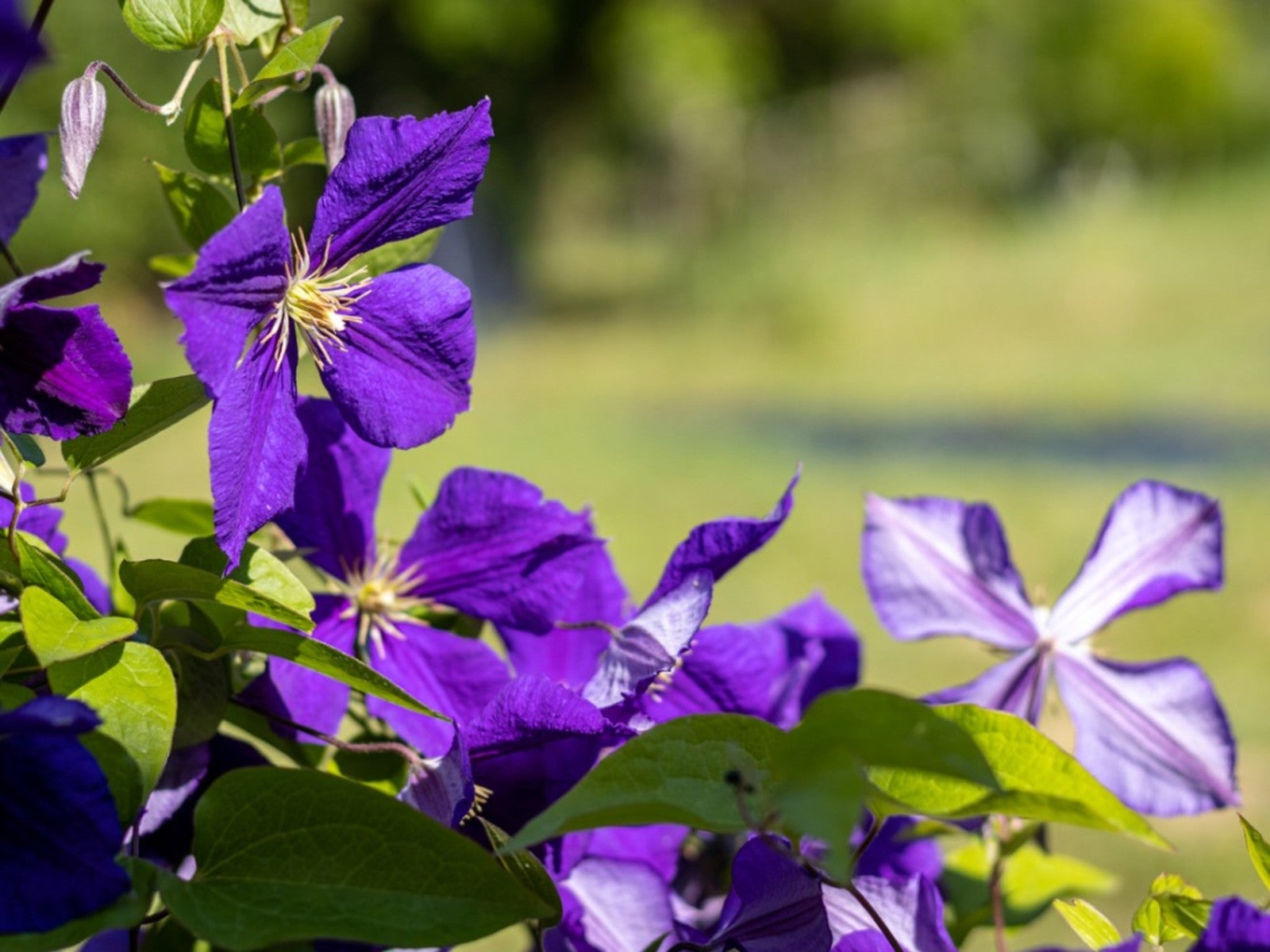What Is A Jackman Clematis - Jackmanii Clematis Vine Info


Adding perennial flowering vines to your garden is an excellent way to add dependable height and dimension to ornamental plantings. From ornate arbors to trailing vines that cover entire walls, the options, in terms of design, are truly limitless. One popular garden vine, clematis, grows in a wide range of shapes, colors, and flower patterns. However, some cultivars are more popular than others. Jackman clematis vines are especially known for their ornamental use in the flower garden and bright, showy profusion of striking violet-blue flowers. But, what is a jackman clematis?
What is a Jackman Clematis?
First introduced in 1862, the jackmanii clematis vine is named after a nurseryman named George Jackman. From early spring throughout summer, vigorous blooms consistently cover the plant, creating a spectacular garden display. This characteristic makes jackman hybrid clematis an excellent choice for perennial flower borders, even in colder USDA growing zones. At maturity, these deciduous vines can quickly grow to reach heights of up to 10 ft. (3 m).
Note: Like many ornamental plants, clematis vines are considered to be highly toxic. If you’re growing jackman clematis vines, you should always take great care to ensure the safety of children, pets, and other visitors to the garden.
Jackmanii Clematis Care
If you’re wishing to grow jackmanii clematis, you’ll first need to research the plant’s specific requirements. Depending upon the variety, ideal conditions for clematis can vary greatly. In selecting a location, look for well amended soil with good drainage. Jackmanii clematis vine will grow best in an area where the top portion of the plant will receive full sun, and the bottom portion and root zone will be shaded. You can keep the root zone cool by shading it with other perennial plants nearby, or by adding mulch to the flower bed.
Jackmanii clematis care also requires that its vines are provided with a trellis or other strong garden support structure on which to climb.
Since this type of clematis will only bloom on new growth, pruning will be required to encourage strong blooms season after season. This is most often done in late winter, while the plant is still in its period of dormancy. Hard pruning, back to about 1 ft. (30 cm.) from ground level, often yields the best results.
Gardening tips, videos, info and more delivered right to your inbox!
Sign up for the Gardening Know How newsletter today and receive a free copy of our e-book "How to Grow Delicious Tomatoes".

Tonya Barnett has been gardening for 13 years. Flowers are her passion. She has transformed her backyard into a cut flower garden, which she regularly chronicles on her YouTube channel http://www.youtube.com/@tonyawiththeflowers.
-
 Get Ready For A Summer Of Hummers! Grow These Full Sun Hummingbird Plants and Flowers
Get Ready For A Summer Of Hummers! Grow These Full Sun Hummingbird Plants and FlowersIf you’re lucky enough to enjoy a sunny backyard, make sure you are maxing out on your pollinator opportunities and grow these full sun hummingbird plants and flowers
By Tonya Barnett
-
 12 Lush Alternatives To A Lawn For Sustainable Spaces
12 Lush Alternatives To A Lawn For Sustainable SpacesAlternatives to a lawn are beautiful and also beneficial to your local ecosystem and its pollinators. Explore our top picks for plants to replace grass.
By Tonya Barnett